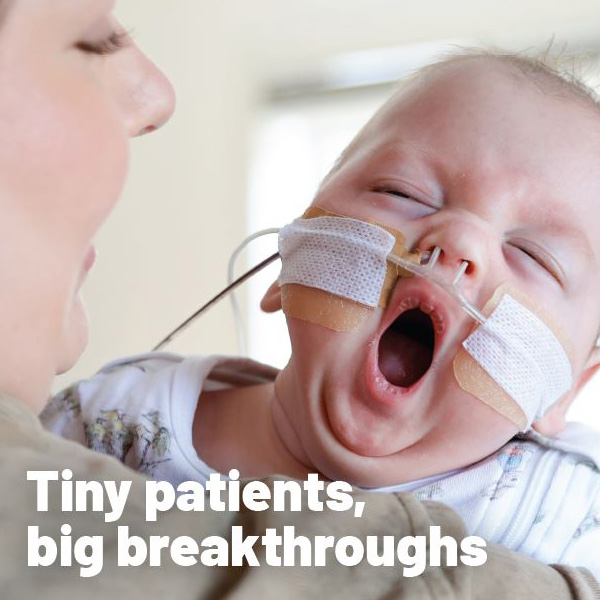Message pattern sent out by embryo key to successful pregnancy
By Hudson Institute communications
Hudson Institute researchers have identified that a small molecule, released by a human embryo in the womb, could be key to understanding why some embryos do not implant during IVF.

The lining of the uterus or womb, also called the endometrium, is like a ‘soil’ where an embryo, or ‘seed’, must implant in order to create a successful pregnancy. When an embryo fails to ‘stick’ or implant in the walls of the uterus during IVF, the pregnancy fails.
In a study published in the journal, Reproduction, Fertility and Development, Professor Eva Dimitriadis’ research group in the Centre for Reproductive Health found that embryos release a small molecule (microRNA-661) or message to a woman’s body in a pattern. This pattern reflects whether the embryo will implant after IVF or not.
The team also showed that microRNA-661 regulates the way an embryo ‘sticks’ or attaches to the cells that line the uterus.
“Small RNAs known as microRNA were previously thought of as ‘junk’, but they been shown to be important master regulators of many diseases,” Prof Dimitriadis said.
“We are the first group worldwide to demonstrate that the microRNA are taken up by cells of the uterine lining and affect their adhesive capacity.
“Now that we identified how the microRNA-661 achieves this, it may be possible to manipulate specific factors in the uterine cavity prior to IVF, to help an embryo to implant and assist more women to achieve a successful pregnancy.”
About Hudson Institute
Hudson Institute’ s research programs deliver in three areas of medical need – inflammation, cancer, women’s and newborn health. More
Hudson News
Get the inside view on discoveries and patient stories
“Thank you Hudson Institute researchers. Your work brings such hope to all women with ovarian cancer knowing that potentially women in the future won't have to go through what we have!”




